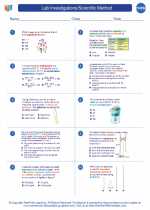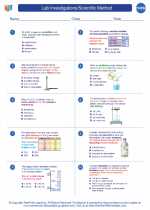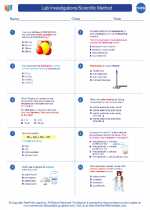Generators: A High School Chemistry Study Guide
Generators are devices that convert mechanical energy into electrical energy. This process is based on the principles of electromagnetic induction, discovered by Michael Faraday in the 1830s. Understanding generators is essential in the study of electricity and is an important topic in high school chemistry.
How Generators Work
Generators operate based on Faraday’s law of electromagnetic induction. When a coil of wire is rotated within a magnetic field, an electromotive force (EMF) is induced in the wire. This induced EMF causes a current to flow if there is a complete electrical circuit. The mechanical energy used to rotate the coil is converted into electrical energy that can then be used to power devices.
Types of Generators
There are two main types of generators: AC (alternating current) generators and DC (direct current) generators. AC generators produce alternating current, where the direction of the current changes at regular intervals. DC generators produce direct current, where the current flows in one direction.
Components of a Generator
Generators consist of several key components:
- Coil of wire: This is the part of the generator that rotates within the magnetic field.
- Magnetic field: Typically created by a permanent magnet or electromagnet, the magnetic field interacts with the coil of wire to induce an EMF.
- Slip rings and brushes: In AC generators, these components allow the output electrical connections to remain stationary while the coil rotates. In DC generators, these components help to convert the induced AC into DC.
- External circuit: This is the electrical circuit through which the generated current flows, powering devices or being stored in batteries.
Applications of Generators
Generators are used in a wide range of applications, including:
- Power generation in electricity plants
- Backup power supply in buildings and facilities
- Electricity generation in vehicles and portable devices
Study Tips for Generators
When studying generators in high school chemistry, consider the following tips:
- Understand the relationship between magnetic fields and the induction of electrical current in a wire.
- Practice drawing and labeling diagrams of AC and DC generators to understand their components and how they function.
- Explore real-world examples of generator applications to see the principles in action.
- Review the mathematical concepts related to generators, such as calculating induced EMF and understanding the relationship between rotational speed and frequency of the generated current.
By mastering the principles of generators, you can gain a deeper understanding of electromagnetism and the practical applications of electrical energy.
[Generators] Related Worksheets and Study Guides:
.◂Chemistry Worksheets and Study Guides High School. Lab Investigations/Scientific Method

 Worksheet/Answer key
Worksheet/Answer key
 Worksheet/Answer key
Worksheet/Answer key
